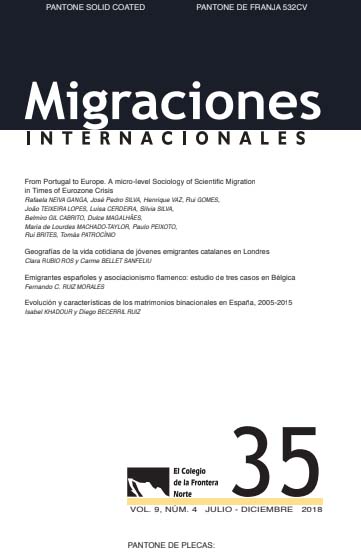
Entrevistas con migrantes retornados en Puebla, México, antes y después del endurecimiento de la frontera de mediados de la década de 2000, revelan un mayor riesgo de detención y violencia contra los migrantes por parte de los coyotes y criminales en la frontera, reduciendo la migración circular. Los cuerpos ilegales están desposeídos de seguridad física y bienestar psicológico para crear valor en múltiples procesos de acumulación: dentro del proceso de producción como mano de obra vulnerable, así como mercancías para los coyotes y los centros privados de detención. La violencia disciplina a los migrantes para las relaciones laborales más explotadoras de los programas de trabajadores temporales.

Copyright (c) 2018 Migraciones Internacionales

This work is licensed under a Creative Commons Attribution-NonCommercial-NoDerivatives 4.0 International License.
You may also start an advanced similarity search for this article.